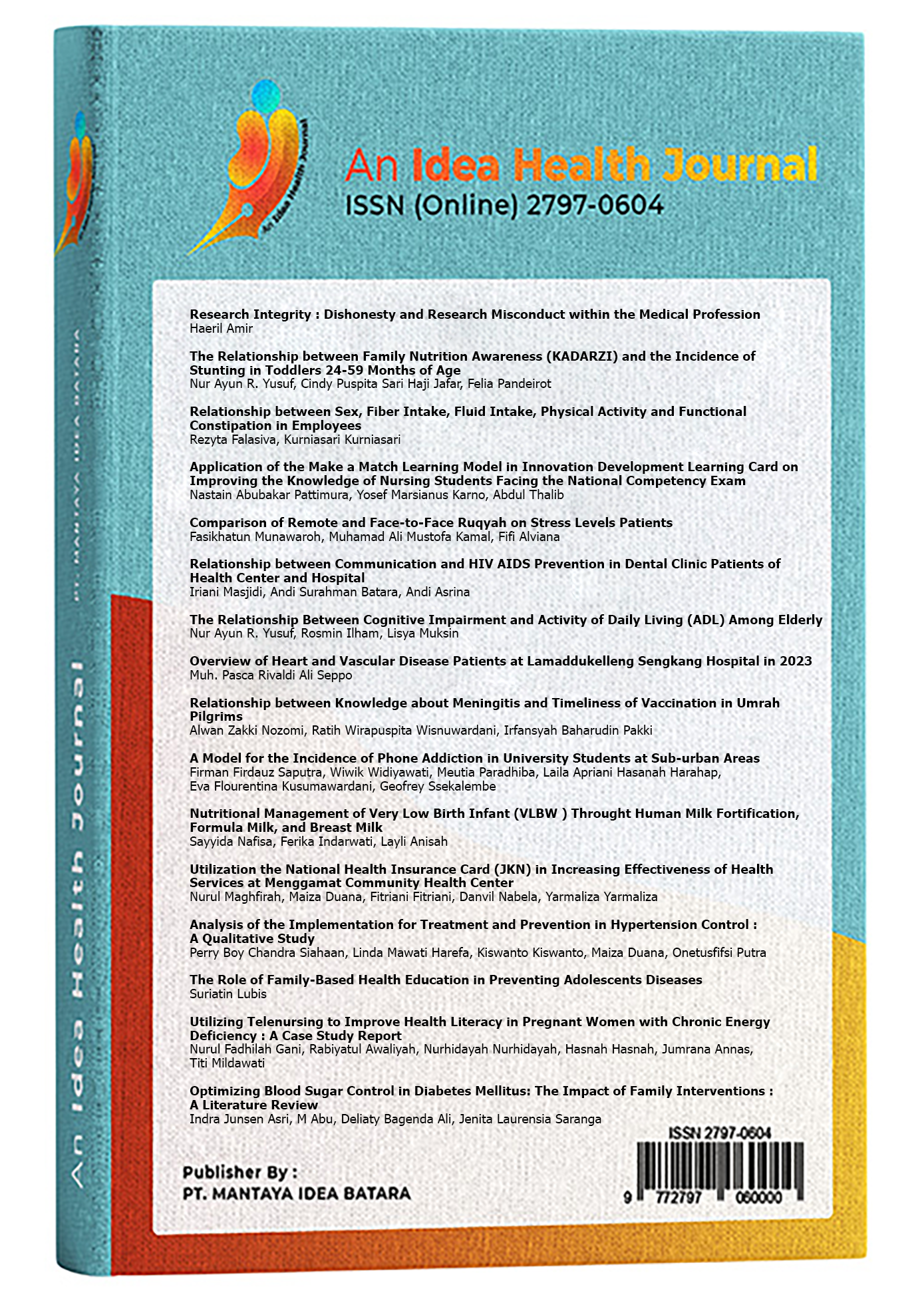A Model for the Incidence of Phone Addiction in University Students at Sub-urban Areas
DOI:
https://doi.org/10.53690/ihj.v5i02.482Keywords:
Model, Phone Addiction, Students, Sub UrbanAbstract
Indonesia is the fourth country worldwide regarding smartphone use, reaching 100 million users. The use of cell phones has a negative effect called phone addiction, which can lead to further health problems, both physical and non- physical health problems. This study aimed to model the incidence of phone addiction in students in suburban areas. The population of this study were students of Muhammadiyah University Gresik who were 17 years old, had a smartphone, used a smartphone for> 2 years, and had internet access. Data was collected online from March - April 2020 with 101 respondents. Samples were selected using simple random sampling. The condition of phone addiction was measured using the Smartphone Addiction Scale Short Version (SAS-SV) questionnaire. Analysis was carried out using Pearson chi-square and multiple logistic regression. The results of the bivariable analysis obtained variables associated with the onset of phone addiction, namely age, last education, residence, location of residence, and faculty of origin of respondents. The results of the multivariable analysis that was carried out obtained several significant variables, namely the age of the respondent (0.09; aPR 0.393) and the duration of daily cellphone use (0.05; 1.543). Students are a population with a high risk of developing phone addiction. One of the most critical factors for the onset of phone addiction is the high duration of cell phone use. Preventive measures need to be taken to reduce and prevent the onset of phone addiction in students before it causes further health problems.
Downloads
Downloads
Published
How to Cite
Issue
Section
License
Copyright (c) 2025 An Idea Health Journal

This work is licensed under a Creative Commons Attribution 4.0 International License.









